Nichole Louise's Blog, page 4
December 2, 2024
Review: A Council of Dolls by Mona Susan Power
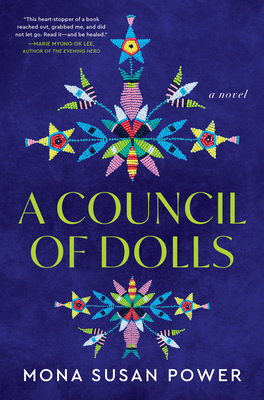
A Council of Dolls by Mona Susan Power recounts a family saga through the generational trauma of “Indian Boarding Schools.” The book follows three woman from each generation, starting with Sissy in 1960s Chicago. Her parents are both boarding school survivors and have effectively been forced to move to a city for jobs and resources. Sissy is at odds with her mother, Lillian, who she both greatly fears and loves. Lillian carries her trauma as an adult and projects it onto her daughter, who never knows where her unpredictable behavior will take the day. Sissy’s father, Cornelius, is loving but somewhat closed off given his own boarding school experiences as well as his time serving in the Korean War. In light of these tenuous relationships, Sissy turns to her doll, Ethel (a gift from her father) as her friend and confidant. Ethel is enigmatic, almost mystical in her abilities leaving the reader wondering if the doll is simply a form of an imaginary friend for Sissy or something more.
The next section of Council is dedicated to Lillian’s experience in the 1930s in a boarding school in Bismark. When school is not in session, Lillian is at home on the reservation with her siblings, mother Cora, and abusive and alcoholic father Jack. Both Cora and Jack are survivors of the Carlisle Indian Industrial School, their trauma surfacing in myriad ways but most detrimental through Jack. Like her daughter some thirty years on, Lillian finds solace in her doll Mae who is perhaps imaginary, perhaps something more. Lillian’s sister Blanche is also fiercely protective of her, her other siblings, and their mother. Blanche fights against her father’s abuse, as well as the abuse she, her sister, and other classmates suffer at the hands of the nuns in their boarding school.
The early 1900s section follows Cora at the Carlisle School. I found Cora’s story to be the most moving and engaging and would have loved to have read an entire novel just about her. Cora meets Jack, whose father is a white soldier, on the train to the school and the two become fast friends. While Carlisle does not allow fraternization between members of the same tribe, Cora still finds sisterhood and found family with students from other tribes from other parts of the country. The students bolster each other and care for each other in the face of abuse and the stripping of their tribal identities. Cora takes an old cornhusk doll with her and is soon visited by the spirit of a murdered ancestor. The doll, Winona, is said to have witnessed a massacre and carries within her sewn body the trauma of the day. While Winona also serves as a confidant to Cora, she also seems to be the embodiment of the murdered ancestor.
The last section of Council threw me a bit, as the reader is taken back to Sissy in her 50s in the year 2010 as she reflects on her family’s generational trauma. The story becomes meta as Sissy, now called Jesse, begins to write her own story about the generations of women in her family, as well as their dolls. This section felt very autobiographical to the author. The author’s note confirms that Power indeed used her own family’s experiences as basis for many of the stories told in Council.
For anyone who does not know much about the “Indian Boarding Schools,” I highly suggest you read A Council of Dolls to gain a full and personal picture of the systemic stripping of tribal identities (cutting hair, burning personal possessions and clothes, forbidden from using tribal languages, etc.) abuse, and even death so many native children experienced. It is sobering to think we are only a generation or two removed from the trauma so many indigenous peoples experienced at these residential schools.
November 20, 2024
Review: The Briar Club by Kate Quinn
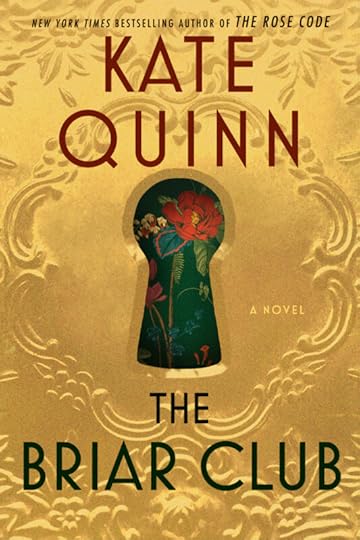
Taking place in 1950s Red-scare Washington, D.C., The Briar Club follows the internal machinations of Briarwood Boarding House. Run by the stingy Mrs. Nilsson, along with her wise-beyond-his-years teenage son Pete and aspiring baker daughter Lina. There’s Grace March, enigmatic, compassionate, motherly, but holds a damning secret. Fliss, the “perfect” house mate and mom to baby Angela. Arlene, the “goody-two-shoes” who is a devotee to McCarthyism. Reka, the Hungarian artist WWII refugee. Bea, the fast-talking League of their Own gal. Nora, a balanced head on her shoulders who falls for a gangster with a heart of gold. Claire, the redhead bombshell with many jobs and many secrets.
Quinn crafts the full picture narrative by dedicating each chapter to each woman’s POV while having interlude chapters from the house’s POV, which I found very creative. The interlude chapters give piece by piece information on the climax of the story, with each woman’s chapter filling in the gaps and series of events leading up to the events that have occurred in the house POV interludes. While the chapters dedicated to each woman’s POV are long, I found myself wanting to revisit some of them to see what was going on in their lives from their perspective. As such, we don’t get clear cut answers on some threads, but rather observations and assumptions from other characters.
Readers who enjoy found family tropes will love The Briar Club. A group of women in different life stages, different views, different preferences, are pulled together by Grace’s yearning for family and love via weekly dinners (each woman’s chapter has her own recipe, including recipes by others) in her tiny room with green walls and a TV set. The women ultimately rally around one another in the face of crisis, demonstrating they are truly found family.
As an aside, I’d love to read prequels about Grace and Reka!
October 27, 2024
Review: The Maiden of Florence by Katherine Mezzacappa
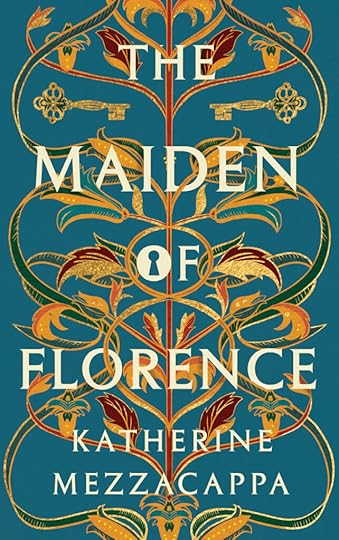
The Maiden of Florence, based on true events, follows orphan Giulia Albizzi who is pulled from the Pieta and taken into the care of the Medici Grand Duke for a larger scheme. Having been raised in the Pieta, Giulia is naive of the world and of men. Growing up an orphan with fleeting friendships in the Pieta, she also craves basic touch and affection which in turn aligns with her naive nature making her the “perfect” pliable young woman to be used in the political machinations of powerful men.
The scheme is for Giulia to be used as “testing ground,” as it were, for the Medici Prince to prove his virility before he enters into marriage. In a world where producing an heir was of the utmost importance in securing dynastic power, such matters were then treated very seriously. Be warned, this novel depicts scenes of SA in the form of multiple forced, invasive examinations Giulia must endure to ensure she is a virgin, during the act to prove the Prince’s “ability,” and after the act to prove it has been done. Vinta, the Medici minister in charge of facilitating this exploitative process, takes advantage of Giulia’s naivety and the power imbalance between them. He also carries a life long manipulative obsession with Giulia, as he hovers in the background of her life like a menacing specter.
In exchange for her part as a pawn in this scheme, she is promised a generous dowry and a husband selected by Vinta. Giulia’s marriage does in truth bring her happiness and peace with a respectful husband who is a court musician. Although he is a man of his time, he is also legitimately concerned with Giulia’s happiness and well being. His kindness is a breath of fresh air for Giulia, who has only ever known the cruelty of men.
The Maiden of Florence is an astute study of the exploitative nature of power dynamics, both in gender and socioeconomic status in the late 16th, early 17th century setting. The author does not sugar coat the brutality women faced being at the mercy of men’s whims and machinations. She also does not portray anyone as acting too modern, but rather living very much within the social customs and constraints of his or her time.
October 26, 2024
Review: Eleanore of Avignon by Elizabeth DeLozier
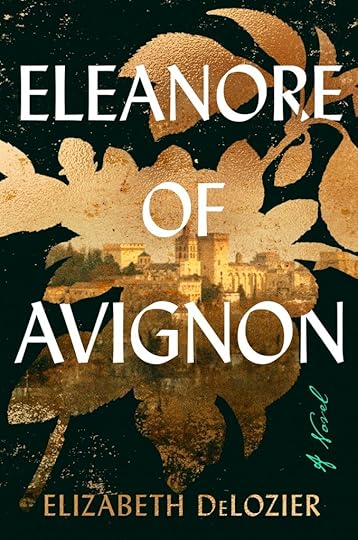
Eleanore of Avignon by Elizabeth DeLozier follows Eleanore Blanchet at the start of the Black Death in 1347 France. Elea is a healer skilled in herblore and midwifery, as taught to her by her late mother. When she unsuspectingly meets Guigo, the Pope’s physician foraging for berries to make a tonic, a new life opens for her. Guigo is interested to learn Elea’s herblore and remedies, as his own physician’s education did not teach such methods.
When a tonic works to quell the Pope’s ailment, Guigo takes on Elea (quite unconventional for the time) as his apprentice. Just as Elea begins her training, whispers of the plague grow until it reaches Avignon. Guigo and Elea study all the texts available to them to discern the origin and nature of the plague, and how best to treat it. They find that if the plague presents without swollen buboes, they cannot treat it, yet if a patient develops buboes, they develop a method of lancing and administering a “blood cleansing” tonic. I found this method very interesting, as I had never heard of that technique being done during this period. I looked it up and lancing was indeed a method. The author also includes mention of other treatments with little to no effect such as ingesting Armenian clay. As a side note, I find the history of medicine very interesting.
As in any time of crisis, there are people who look for scapegoats to blame. The Jewish population of Avignon is targeted for the cause of the pestilence, with many losing their lives. Witchcraft, as an age old scapegoat, is of course used as well. And with Elea practicing a “man’s profession,” she too is looked upon with suspicion.
I found Eleanore of Avignon to be a swift and solid read. I couldn’t help but draw comparisons to how the Covid-19 pandemic impacted our world today, and while our medicine is far more advanced, society still operates in a similar way. In times of crisis, like a pandemic, there will always be conspiracy theories, scapegoats, and opportunistic people taking advantage of the situation.
Eleanore of Avignon will be released November 5, 2024
October 14, 2024
Review: Horses of Fire by A.D. Rhine
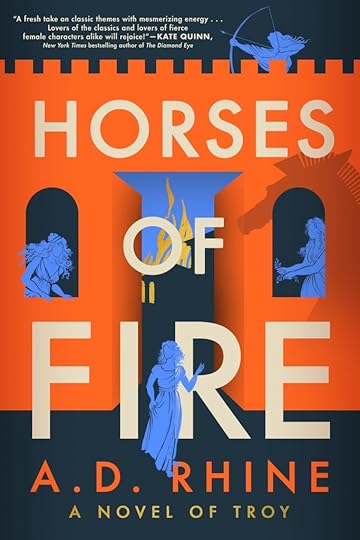
Horses of Fire by A.D. Rhine is a retelling of the Trojan War from the perspectives of Helen, Andromache (wife of Hector,) and Rhea (a young enslaved woman raised in a horse breeder family.) In this version, Helen has been taken from her former home and husband by Paris against her will. As the years progress, Paris becomes increasingly abusive to Helen by holding the safety of her daughter by her first husband over her head. What’s more, Helen is a trained healer whose skills could be valuable during Troy’s war, but she is ostracized by those in the palace because they blame her for the start of the war. Helen is perhaps ostracized the most by Andromache, who Helen only seeks to help and gain a sister in. Cassandra (Hecotr’s sister) is also in this retelling but does not have a POV chapter until the end. Cassandra is a type of prophet in this book, and is described as having multiple personalities. While the main characters each have interactions with her, Cassandra is for the most part locked away for being “mad.”
Andromache is Hector’s wife, but she has also been reforged in Horses of Fire as an Amazon warrior. Due to her fighting training, Andromache wishes to participate more actively in defending Troy, but her role as wife with only “one job”, to produce an heir, is the marker by which all of Troy seems to measure her. Andromache chafes against this role and expectation, while at the same time having genuine love and respect for Hector–and in turn, it seems he also holds the same love and respect for her.
Rhea comes from a family of horse breeders, her father having formerly been a soldier under Hector and a type of horse master for him as well. Rhea understands horse breeding, temperaments, and training like no one else due to her upbringing. As such, Hector recognizes her valuable abilities at a time when strong horses are so sought after for use in battle, that he employs her in his stables, quite against social conventions. Although Rhea is naive about much of the world, she is intelligent and sensitive and in time, draws Andromache and Hector closer as they see her as a type of surrogate daughter. She also plays a part in healing the rift between Andromache and Helen.
Overall I found Horses of Fire beautifully written, but at times it did seem to drag (especially around the 60-70% mark.) Also around this mark a plethora of characters are introduced who are probably in the original story, but I did not know who they were and could not keep them all straight. All of these new characters coming in near end honestly confused me and left me feeling lost so near to the climax.
October 1, 2024
Review: The Stone Witch of Florence by Anna Rasche
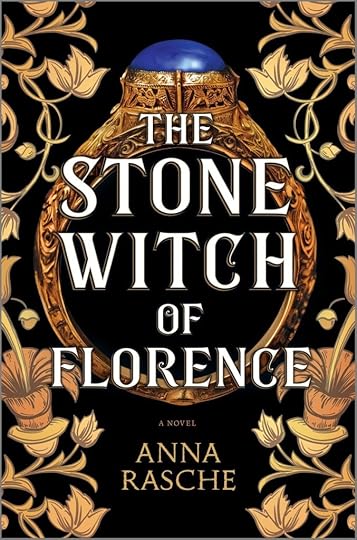
In 1348 Italy, at the height of the Black Death, Ginevra is summoned out of exile to Florence to aid the city in ridding the pestilence. The local clergy believes the plague is caused by the disappearing holy relics from the city and turn to Ginevra who had previously been marked as having knowledge of the dark arts. In truth, Ginevra di Genoa studied under a type of cunning or wise woman who healed through stones and jewels. She taught Ginevra the history and unique healing powers of each stone, always encouraging Ginevra to never advertise their special abilities and skills for fear of being accused and tried for witchcraft. Years later, Ginevra is sent to a convent in Florence as a servant but also to become a pupil of one Sister Agnesa. While Agnesa also stresses the importance of discretion when employing the magic of the stones, Ginevra cannot help herself in aiding those in need when a new pestilence surfaces in Florence.
As an adult and adept stone-healer, Ginevra journeys back to Florence to uncover a mystery of the missing relics. Along the way, she befriends a cast of characters both amusing and comical. Despite the darkness of the situation, there is humor–much in line with Boccaccio’s Decameron, which Rasche has no doubt pulled inspiration from. The author’s blend of medieval pseudo-science, gem lore (she is a gemologist and jewelry historian!), and magic provide an engaging and fun lens through which to view the stones Ginevra uses to remedy certain ailments. At times, The Stone Witch of Florence reminded me of Leigh Bardugo’s The Familiar with its unique blend of historical fiction and fantasy/magic. That said, some of the dialogue and mannerisms seemed too modern at times. Overall, I still found TSWF to be an entertaining and creative story.
The Stone Witch of Florence will be released October 8, 2024
September 17, 2024
Review: Silence by Julia Park Tracey
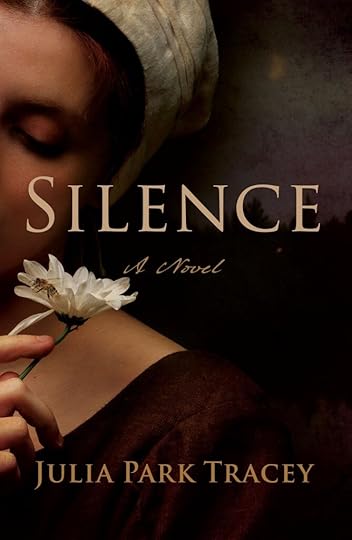
In Silence, author Julia Park Tracey imagines the life of her 1720s ancestor in the Massachusetts Puritan community. Tracey was at first intrigued by her ancestors’ name, Silence, and reflected on what kind of a life of a woman named Silence in the early 18th century might have. As an aside, many people (particularly women) of the MA Bay Colony had attribute names. One of my own ancestors of this time/place was named Deliverance!
Tracey starts with the facts she knows – that the real Silence Marsh lost her mother, husband, and baby all in the same year. From there, Tracey weaves a tale of Silence voicing her disillusionment with God for allowing such tragedies to befall her. For her disobedience, Silence is ordered to a year of silence as well as a series of public humiliations. Widowed, she moves back in with her weaver father and tends house deep within her introspection. Much of Silence’s life during this period is in deep reflection and isolation. Despite her inability (order not to) to speak, Silence forms unexpected friendships with a willful young girl, a Boston apothecary woman and her doctor son, and a woman who has been largely outcast due to her former captivity in a Mohican community.
The aspect of Silence that most stands out to me is the in-depth descriptions of domestic tasks for a woman of this specific time and place: from beekeeping, to candle making, to cooking and cleaning. Silence is not only lost in her domestic duties of keeping her father’s house, but also very deeply in thought. In truth, the majority of the book encompasses Silence’s inner thoughts and ruminations which at times makes for a slow read despite this short novel. Most of the action in Silence takes place at the beginning and end, with a slow-moving middle that many times had my own mind wandering. I know these inner thoughts and ruminations were important character development for Silence, but I personally did not find these lengthy sections engaging enough to keep my attention.
I appreciate the author’s ancestral research and taking care to craft a life for her ancestor, Silence Marsh.
Silence will be released September 24, 20204
September 13, 2024
Review: Daughters of Rome by Kate Quinn
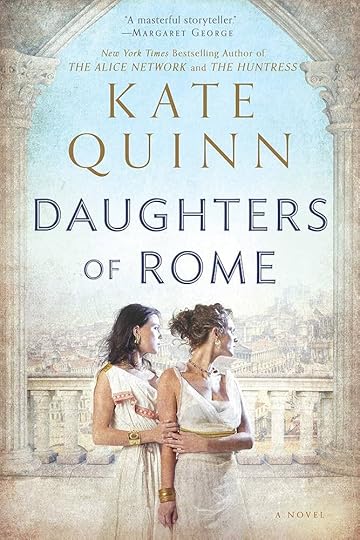
Daughters of Rome by Kate Quinn, the second in her Roman series after Mistress of Rome, begins in 69 AD after the death of Nero. 69 AD is known as the Year of the Four Emperors (Galba, Otho, Vitellius, and Vespasian.) This chaotic year of transition in Rome’s history is witnessed through the eyes of the four Cornelias (sisters and cousins,) Cornelia, Marcella, Diana, and Lollia.
At first I had trouble telling the four women apart, but as the story unfolds their distinct personalities set them apart from each other. Cornelia is a respectable senator’s wife whose social status abruptly changes, Marcella is a historian with an absent husband who seeks to meddle with the power structures of the day, Diana is eccentric and independent and has an obsession with chariot races and horses, and Lollia is often written off a spoiled girl due to her grandfather’s wealth and also her numerous unsuccessful marriages.
As the story unfolds, each woman’s life fortunes changes–some for the better, some for the worse. These changes inform their decisions in a rigid social and political structure, as well as fuel their distinct character arcs. They are each women of their day, participating in conventions of the time that were “normal,” such as having body slaves. That said, there are admirable qualities in each woman despite them taking unwise actions or being unlikable in specific moments. Kate Quinn excels in demonstrating the “soft power” of women at this time as they create their own secret paths toward influence, power, and even personal happiness.
August 13, 2024
Review: The Instrumentalist by Harriet Constable
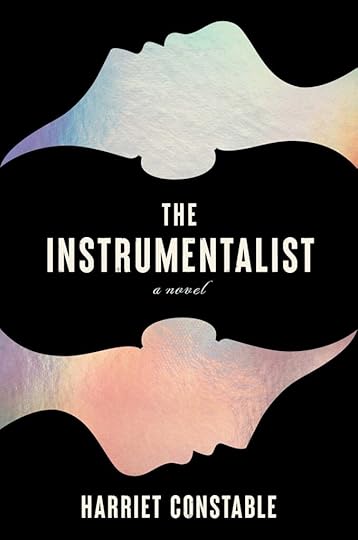
The Instrumentalist by Harriet Constable gives life to real historical figure Anna Maria della Pietà, a musical prodigy brought up in the Pietà convent orphanage learning music and eventually earning a spot within the ranks of the prestigious figlie di coro. While Anna Maria was a real person and a talented student of Vivaldi, I admit I did not know who she was before reading this book. Little is known about the real Anna Maria other than she grew up in the orphanage, was a student of Vivaldi, and went on to enjoy a successful lifelong career as a music teacher and maestro.
Harriet Constable describe Anna Maria as having synesthesia, the ability to assign colors to sounds (or perceive sounds as colors.) As such, music for Anna Maria is a very visceral experience. She draws the notice of Vivaldi at just eight years old due to her prodigy level talent on the violin. He soon takes her on as his private student and mentors her musical growth in not just playing and technique, but also writing. As Anna Maria grows into a young woman, she lives and breathes music, yet she also lives at the whim of her fickle and aloof music master Vivaldi. Anna Maria’s drive, ambition, and resolve to achieve at an accelerated rate to change her lot in life and win her teacher’s approval is a force to be reckoned with. Anna Maria is willing to do whatever it takes, even at the cost of her personal friendships, to win a coveted role within the figlie and later the seat of first violin. I suspect some readers may not find Anna Maria as likeable, and while I don’t fully agree with her single-mindedness at the expense of others, I can understand her motivation in being that way because of her upbringing and knowing that she herself is the only vehicle for changing her life as a humble orphan.
Reading this book as an adult woman, I can clearly see the manipulation tactics Vivaldi (several years her senior) uses against naive teenage Anna Maria to achieve his own ambitions. While he presumably marvels at her talent, he is also painted as jealous and cold, willing to trample and use those in his path to get to the top. Toward the end of the book I was very much struck with the parallel and similarities to (as funny as it sounds) the professional relationship between Andy and Miranda in The Devil Wears Prada, but in early 18th century Venice.
Harriet Constable’s writing style and descriptions are vivid and sumptuous, particularly in her depictions of Anna Maria’s synesthesia. The Instrumentalist also partly reminded of Orphan Song by Lauren Kate. While the conclusion was fitting, the themes and lessons tying up the end were a tad overdone and predictable, but that did not ruin my enjoyment of the book overall.
The Instrumentalist will be released August 20, 2024
July 24, 2024
Review: The Betrayal by Helen Dunmore
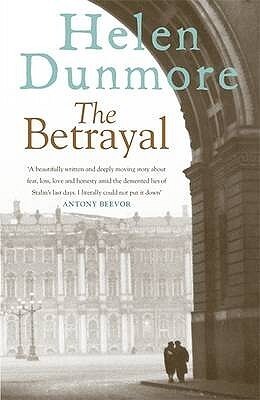
The Betrayal by Helen Dunmore is the sequel to The Siege and follows the lives of Anna, Andrei, and Kolya in 1952 Leningrad. While the traumas of the Leningrad siege still live within each of them, they have carved out normalcy in their lives years after the war. Andrei is a successful doctor, Anna is a pre-school teacher, and Kolya attends school and enjoys upsetting the neighbors with his piano playing. Their peace is threatened, however, when a ten-year-old patient comes under Andrei’s care. The child, Gorya Volkov, is faced with terminal illness and so Andrei and his colleagues must come up with the best course of treatment. Sounds like a fairly normal procedure, right? Well, yes, if the child was not the son of a high ranking Soviet official.
The elder Volkov constantly tries to “catch out” Andrei and his colleagues, questioning them as if they are already arrested and holding them personally responsible for his son’s cancer. Andrei knows anything and everything he says or does will be scrutinized with the brutal closeness of a suspicious Soviet official looking for an easy scapegoat. Andrei and Anna try to prepare for the worse, as they are not completely ignorant of arrests and people being sent away to work camps or executed. Their lives abruptly come crashing down just when they have built a fragile happiness despite the insidious powers that be.
Helen Dunmore takes a routine, if tragic, plot into higher stakes of life and death that ripple from Andrei outward. While The Betrayal is overall heartbreaking, I did not find myself as deeply moved and immersed as with The Siege. The brutality of the arrests, imprisonments, and executions of no doubt millions of Russians will stick with you through Andrei’s experiences.



